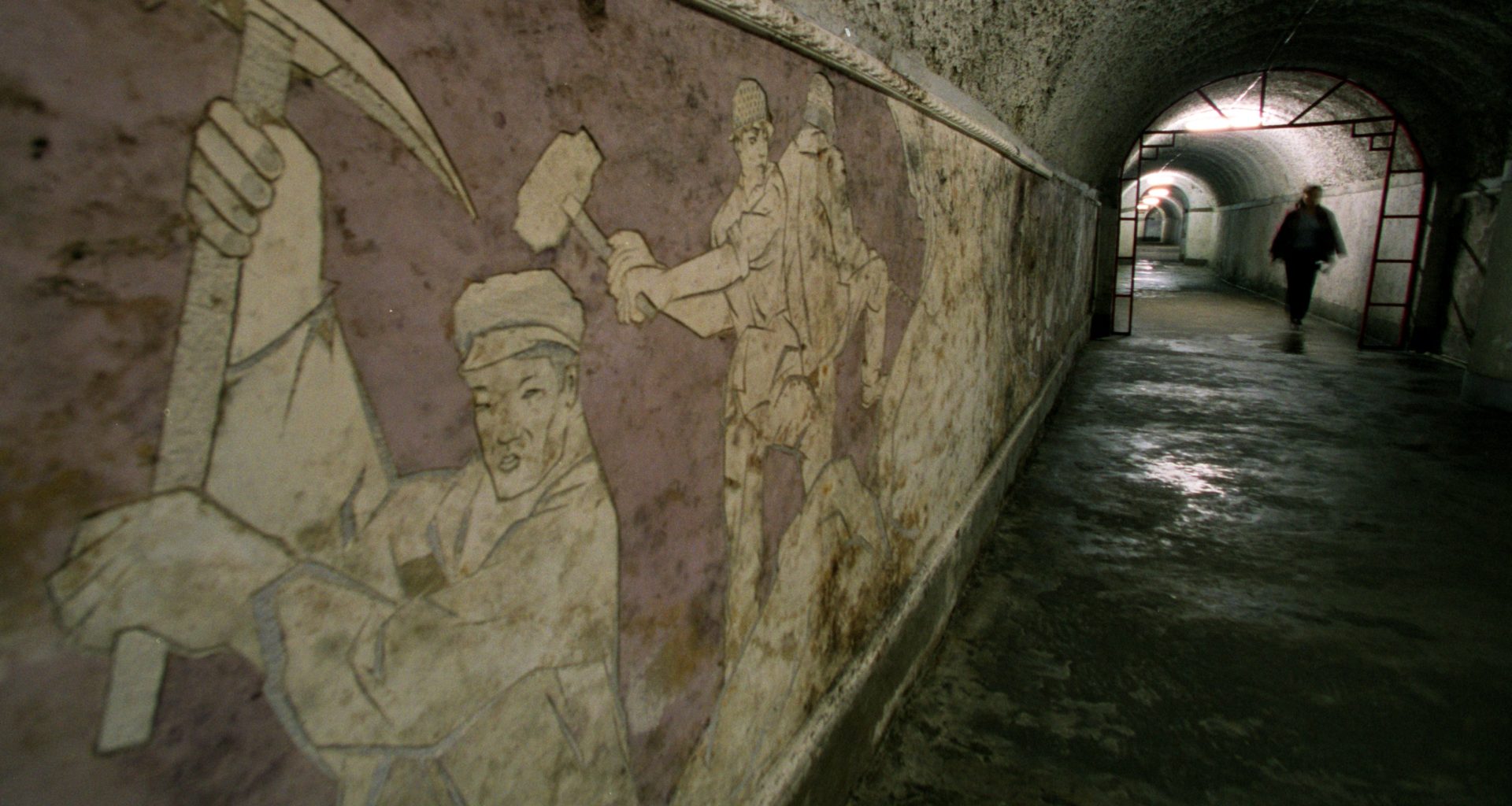DEEP beneath Beijing lies an underground city once home to a million people known as the “Rat Tribe”.
The complex, dubbed “Dìxià Chéng” or “The Dungeon”, was built beneath China’s capital to serve as a network of 10,000 nuclear bunkers during the Cold War.
The doomsday tunnels, which are three stories below ground and believed to sprawl across 85km, are mostly inhabited by low-income and migrant workers.
Much of the living space is cramped and lacks any natural light, but rents can be a third of those above ground.
Some residents have lived in the complex for decades, while others pass through, staying only until they are earning enough to afford a regular apartment above ground.
The tunnel dwellers at their height numbered a million – although it’s not known exactly how many remain in the darkness looking for cheap rent in a city with sky-rocketing costs.
read more on china
Dig deep tunnels, store food, and prepare for war
Mao Zedong, ex-chairman of the Chinese Communist Party
The homes are technically illegal following a 2010 ruling by Beijing authorities amid safety concerns but, while some residents have been evicted, most have so far been allowed to stay.
NUKE BUNKER
The construction of the tunnels began in 1969 during the height of tensions and fears of full-scale conflict between China and the Soviet Union.
Mao Zedong, then chairman of the Chinese Communist Party, told citizens to “dig deep tunnels, store food, and prepare for war”.
The plan was for 60 per cent of Beijing’s six million residents to run for the hills if World War 3 broke out and the other 40 per cent would bury themselves deep below.
Most read in The Sun
Over the next ten years, around 300,000 people – largely civilians – were ordered to begin building the extraordinary network.
On its completion, it housed 10,000 atomic bunkers, warehouses, factories as well as classrooms, restaurants, theatres, and even a roller skating rink.
And it was built to last.
The whole complex was fitted with ventilation shafts that could resist the fallout of nuclear, biological and chemical weapons.
Other chambers held grain stores and other food supplies, while some sections were destined to grow sunless cops like mushrooms.
After the threat of nuclear war subsided with the fall of the Soviet Union, “Dìxià Chéng” was initially forgotten.
MAKING A HOME
Plenty of the complex was completely shut off – forever frozen by time behind barred doors and concrete.
But in the decades its closure it was refurbished by nifty locals to house cheap hotels, apartments and businesses.
Parts of the underground metropolis has also been previously shown to tourists.
One resident, named Wei, told Al-Jazeera in 2020 that he lived in a 300-square-foot apartment with nine other people.
“I am doing well because I’m scared of being poor,” he said.
“Many of my colleagues live above ground, but I think it’s too comfortable.
“This place forces me to work harder.”
Annette Kim, a professor at the University of Southern California who has studied its homes, says they serve as a solution for low-income workers.
“Of course, no one would prefer to live underground, but there was a strong preference for location.
“What happens in most parts of the world is affordable-housing projects are in bad areas far from the city because that’s where land is affordable.
READ MORE SUN STORIES
“But people don’t want to live there too because the commute is so far.”
World’s biggest underground cities
Derinkuyu, Turkey
An ancient underground multi-level city that reaches depths of 280ft in Neveshir province. The sprawling network of tunnels can house as many as 20,000 people with livestock and food stores.
Shanghai Tunnels, US
The Old Portland Underground also known as the Shanghai Tunnels connected hotel and tavern basements to the Willamette River to secretly move goods. It’s rumoured that the network was used for crimping – kidnapping people to serve as sailors against their will.
Edinburgh Vaults, UK
The spooky Edinburgh Vaults are a series of chambers formed within the 19 arches of South Bridge.
Legend has it that serial killers Burke and Hare also stored various bodies there to sell for medical experiments. The vaults later became home to the city’s poorest souls.
Wieliczka Salt Mine, Poland
Located in the town of Wieliczka nine miles outside of Krakow, the Salt Mine was built back in the 13th century and has produced table salt continuously until 2007.
The underground salt city has evolved from a series of dark caves to a labyrinth with 185 miles of galleries across 3000 chambers and nine floors.
Pilsen Historical Underground, Czech Republic
The Pilsen Historical Underground is a 12-mile-long labyrinth of passageways, cellars and wells built below the city streets in the 14th century.
These cellars once served as storage for food and barrels of beer. Legend has it that there is treasure buried within the cellar walls.
Source: Sun




















